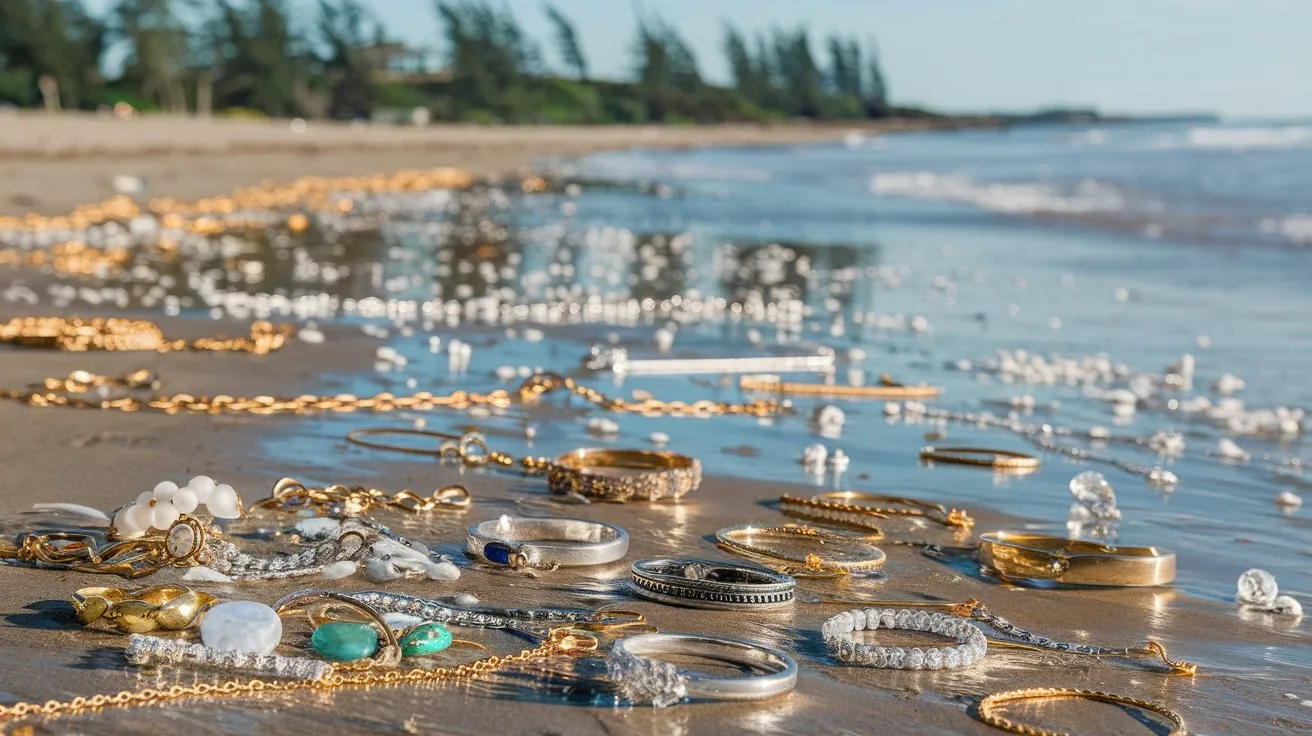Can I find my gold ring with a metal detector?
The primary discoveries made by metal detector enthusiasts are often coins and jewelry,gold ring. While nuisance items such as bottle caps, nails, and soda cans frequently obstruct the search, our focus here is on genuine treasures. Many detectorists gravitate toward a specific category of valuable finds.
If you’re aiming to refine your search, lost jewelry serves as an excellent starting point. There’s a plethora of misplaced adornments waiting to be unearthed—from golden and platinum rings and necklaces to silver bracelets and diamond earrings. For those willing to dig deeper, antique pendants, medallions, and historic pieces await discovery.
Below are several compelling reasons to pursue jewelry treasure hunts with your metal detector:
The Wealth of Lost and Buried Jewelry(gold ring) to Uncover
Jewelry is discarded or forgotten almost everywhere—on beaches, in parks, at sporting events, and even during concerts.
Most metal detectors are calibrated to pick up signals from gold, silver, platinum, and bronze.
Unwanted or broken pieces can be sold for their scrap value, especially considering the elevated price of gold in recent years.
You have the opportunity to amass a collection of highly valuable jewelry.
Where Can Lost Jewelry Typically Be Found?
One prime location frequented by jewelry hunters is the beach. An astounding amount of rings, watches, necklaces, and earrings can be collected using a metal detector. Whether it’s individuals engaged in Frisbee, volleyball, or simply enjoying the waves, they often don’t realize when their rings slip off or the clasps on their necklaces and bracelets give way. Many times, metal detector enthusiasts discover family heirlooms or diamond rings amidst the sands.
While the top layer may hold more recent losses, treasures of yesteryear lie beneath, awaiting discovery.
Older jewelry, especially of the antique variety, can hold even greater value due to its rarity and historical significance. Some beaches, formerly bustling with swimmers, have since eroded or been overtaken by modern development. If you can find historical maps of these areas, you could unlock a treasure trove of lost jewelry just waiting to be found. For more insights into beach treasure hunting, check out “What are the Best Metal Detectors for Metal Detecting on the Beach?”
A particularly heartwarming tale from “My Metal Detector Finds” recounts a story titled “Custom Honeymoon Wedding Ring Lost.” In this story, a newlywed couple was distraught after realizing that the bride’s custom-made diamond ring had been lost during a beach volleyball game. Luckily, a detectorist was nearby and offered assistance, eventually recovering the precious ring to the cheers of a gathering crowd.
Many hobbyists have stories of reuniting lost jewelry with its rightful owners, finding the emotional rewards just as valuable as the treasures themselves.
What Metal Detector Features Are Beneficial for Jewelry Hunting?
Multi-purpose detectors are exceptionally adept at pinpointing jewelry across various terrains. Depending on the time and effort you’re willing to invest in your search, you may want to consider certain features in your detector. Discrimination settings are crucial in filtering out unwanted targets, though it’s worth noting that gold jewelry can sometimes mimic the signal of foil, pull-tabs, or even nickel. Some experts advocate for digging up all signals if you have the patience, as you never know what treasure might be hiding under a less-than-ideal signal.
Features such as visual target ID and depth display can also be incredibly useful. Not only can these features help identify the type of metal you’ve found, but they also provide insight into how deeply buried the object is. Most detectors use a numerical output called a VDI (Visual Discrimination Indicator), displayed on the screen.
Over time, as you become more accustomed to these numbers and the accompanying audio cues, you can make more informed decisions about whether to dig. One seasoned jewelry hunter shares their strategy: “I dig every solid target around 47 and above. In trash-heavy areas, I avoid lower VDIs to skip foil and junk. But in cleaner zones, I dig the mid-40s and often unearth jewelry.”
Popular Metal Detector Models for Jewelry Hunters
To enhance your success in jewelry hunting, it’s essential to select the right metal detector. Whether you’re considering upgrading from a beginner’s model or purchasing your very first detector, seasoned detectorists often recommend doing thorough research. While all metal detectors can locate gold, some are more sensitive and specifically designed to find it.
If your primary goal is to track down gold jewelry, you’ll want a model tailored for that purpose. Additionally, some detectors are waterproof, broadening your range of potential hunting grounds. Establishing a budget is another important factor, as it can help you narrow down your choices.
Most entry-level models come equipped with essential features such as audio tone, visual target identification, expanded depth readings, and an LCD display. Some detectors come with pre-set ground balance to neutralize the effects of minerals, while others offer both automatic and manual adjustments. Discrimination mode, available on many detectors, helps filter out trash. Some advanced models include modes such as “all-metal” or “notch discrimination,” along with a unique target ID for each object.
The instruction manual will explain these features in more detail, particularly when it comes to the significance of target ID numbers and their correlation with different metals. Here are some popular metal detector models that are well-suited for locating jewelry:
Entry-Level Jewelry Detectors
- Bounty Hunter Legacy 2500
- Fisher F22
- Garrett Ace 400
- Fisher F4
Mid-Level Jewelry Detectors
- Garrett AT Pro
- Bounty Hunter Platinum
- Fisher F5
- XP ORX
- Makro Multi Kruzer
Higher-End Jewelry Detectors
- Fisher F75 Ltd
- XP Deus
- Garrett AT Max
- Teknetics T2
Since the market offers such a wide array of metal detectors, MetalDetector.com provides a “Compare Product” feature to streamline your shopping experience. By selecting two or more detectors to compare, you can view a side-by-side analysis that includes a brief description of each, warranty comparisons, audio/visual identification features, depth indicators, operating modes, and much more. Treasure hunting for lost jewelry with a metal detector is an exciting and rewarding pastime.
Whether you’re at home or on vacation, it’s a hobby that offers endless opportunities for discovery.






